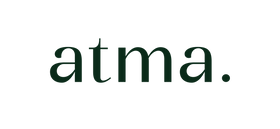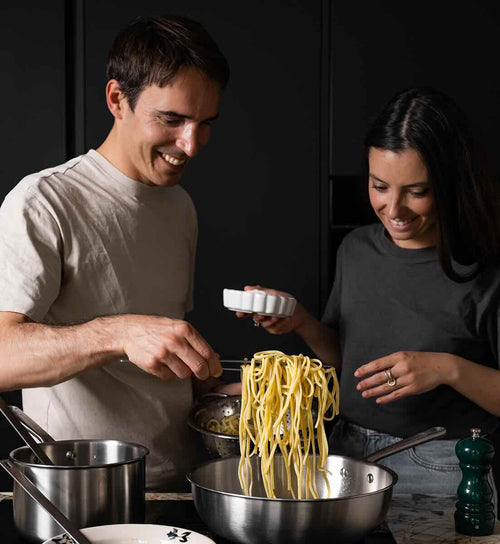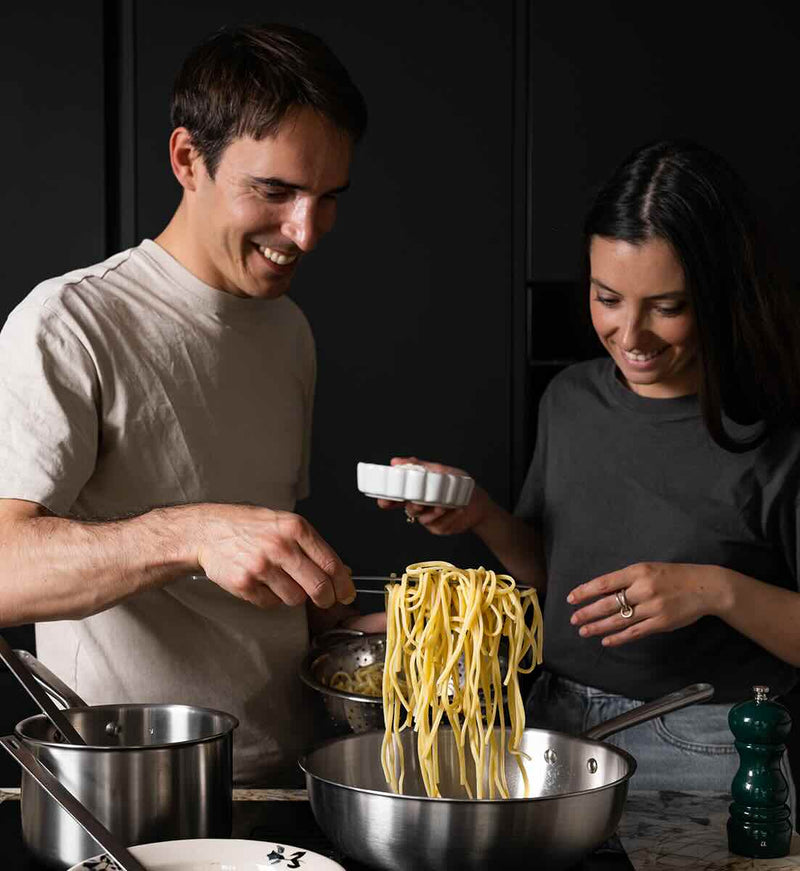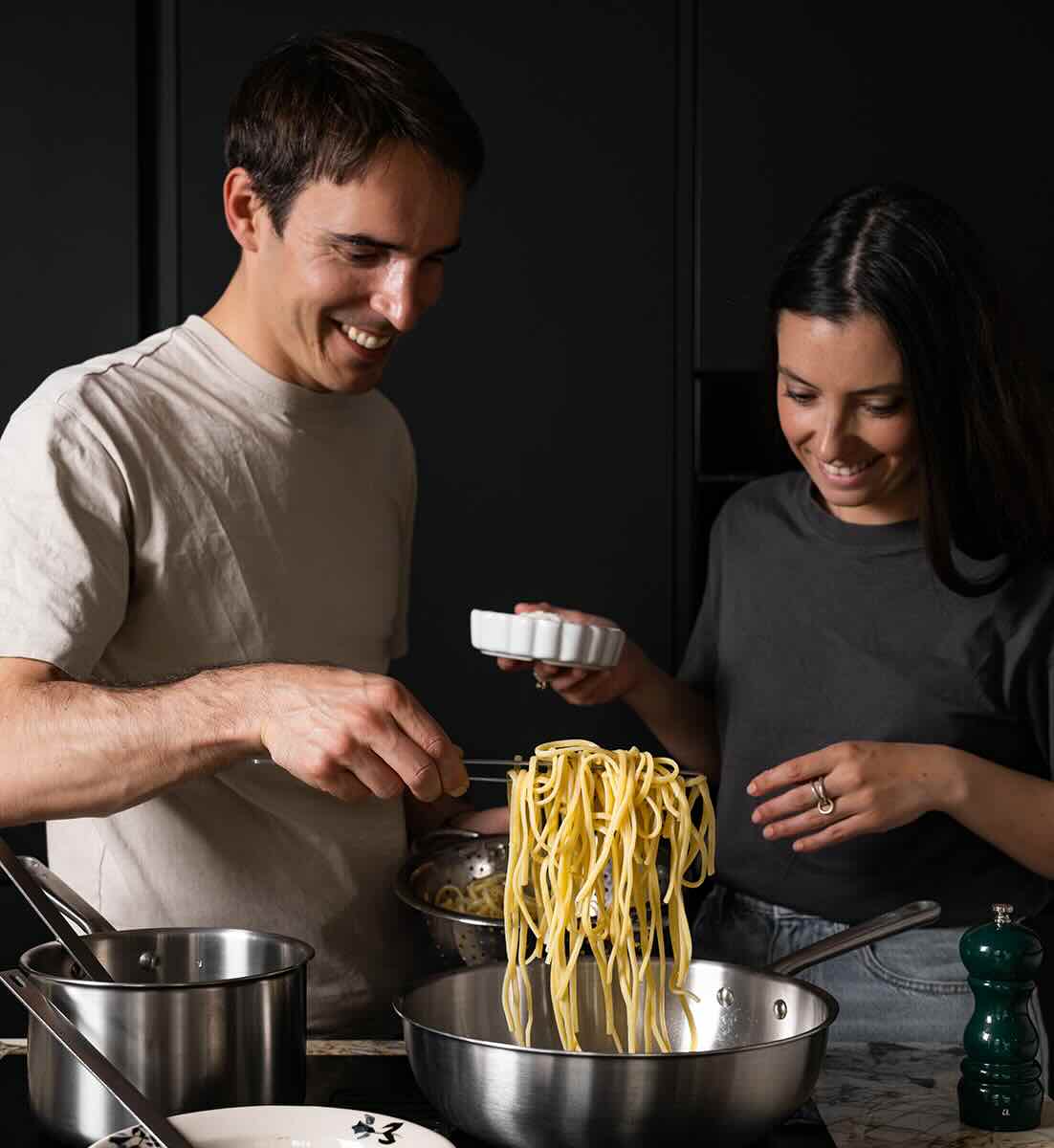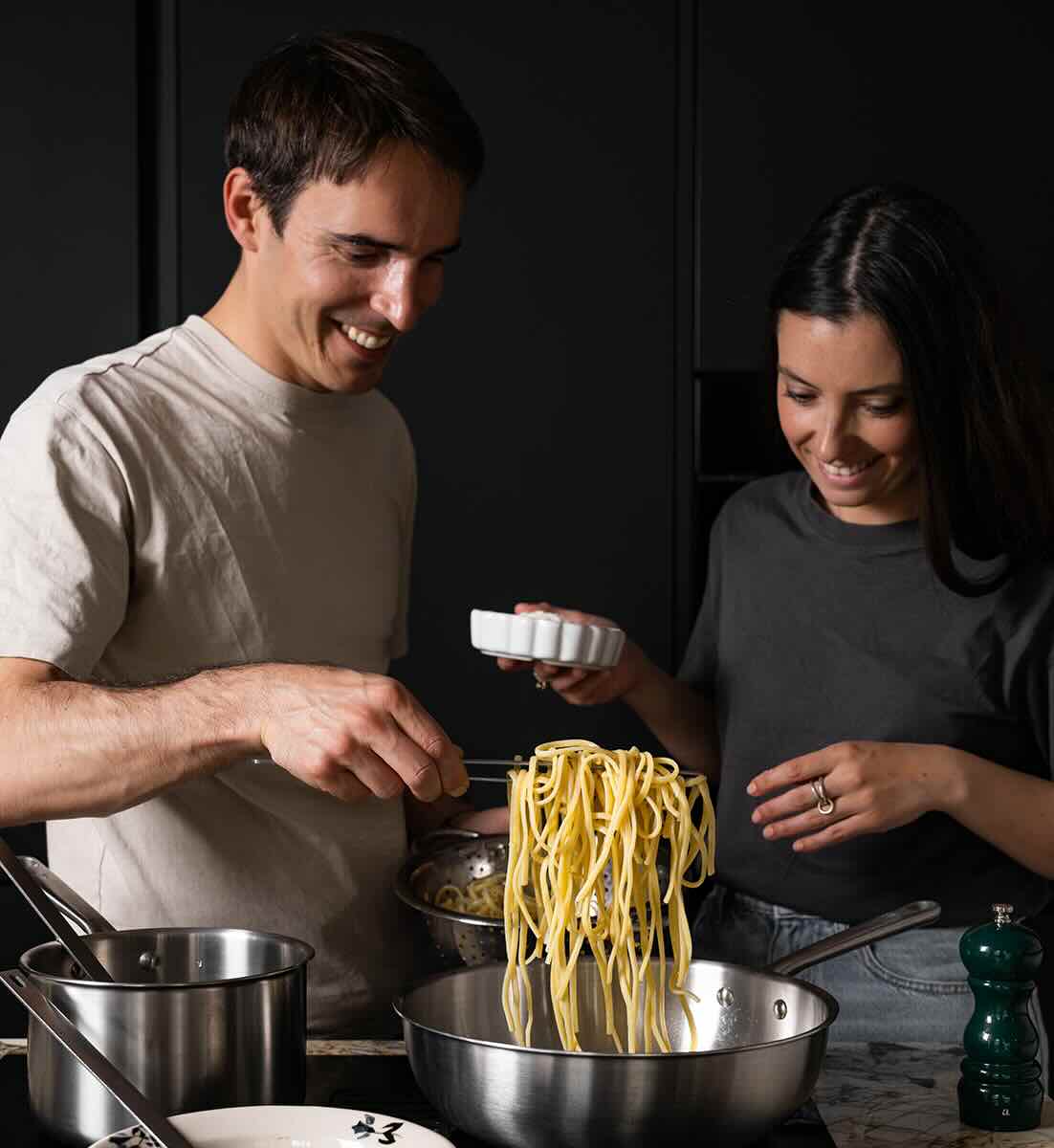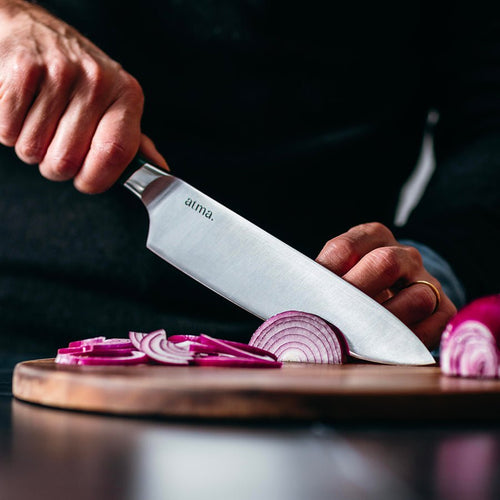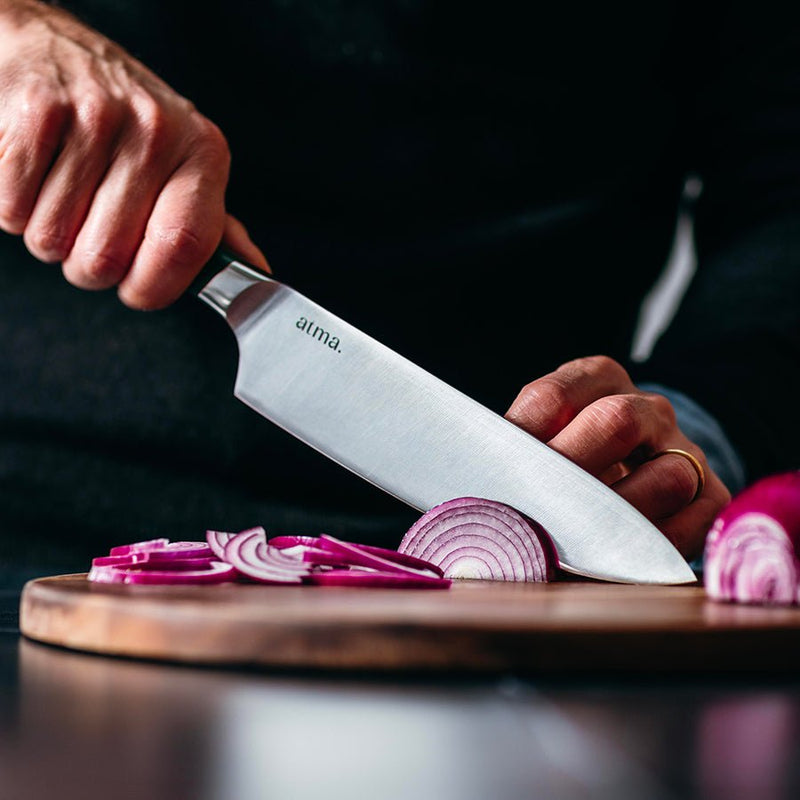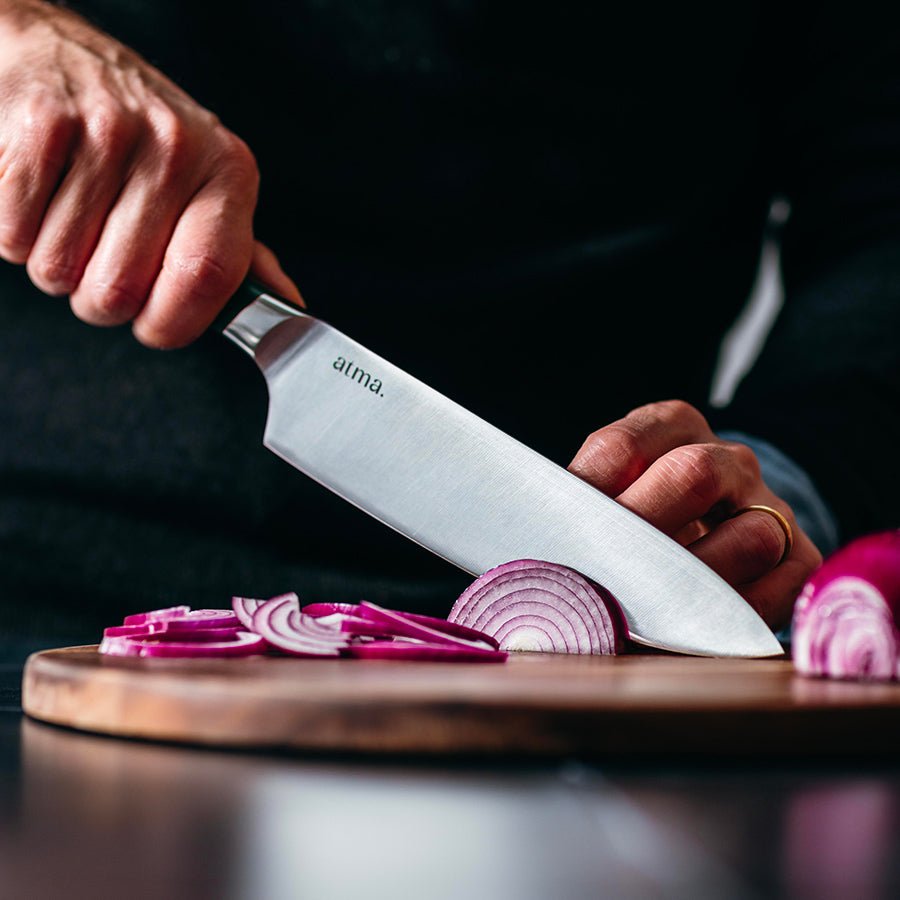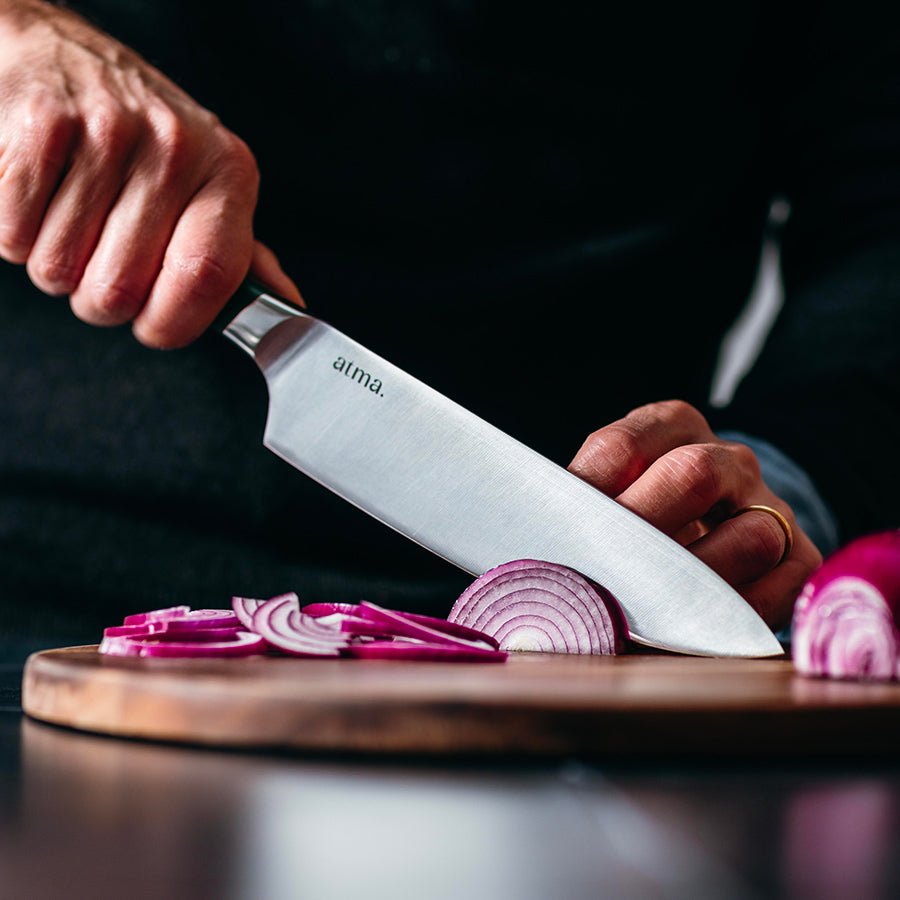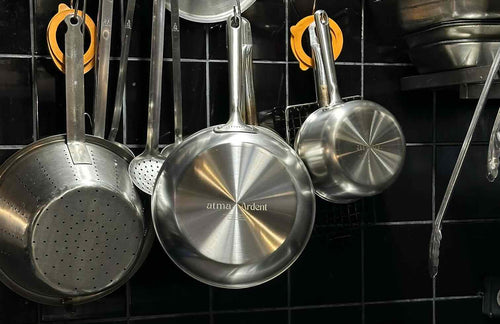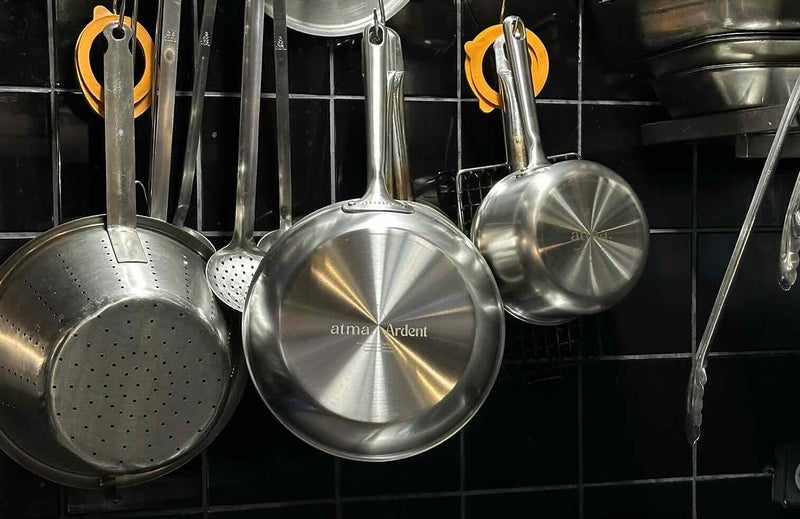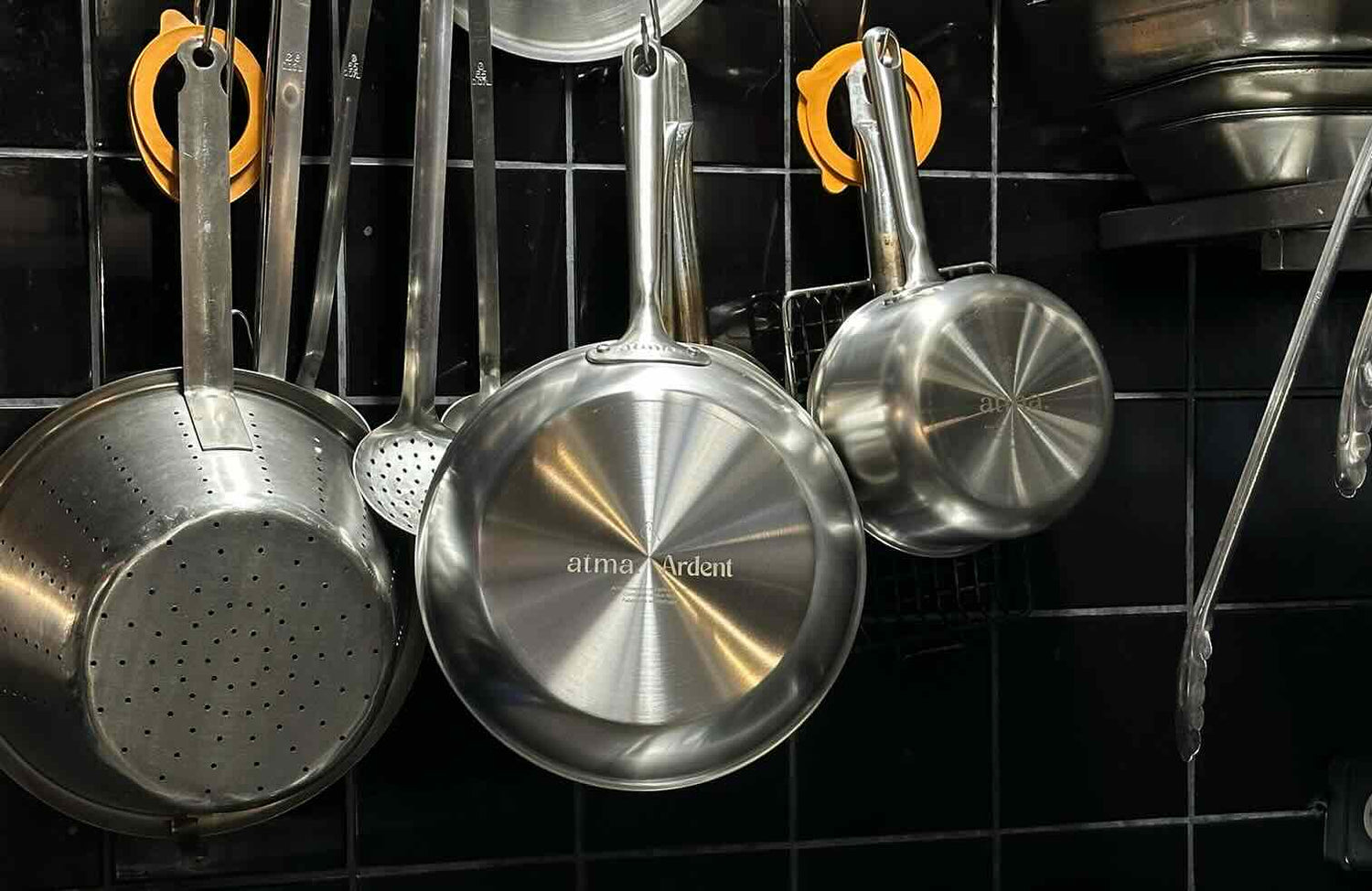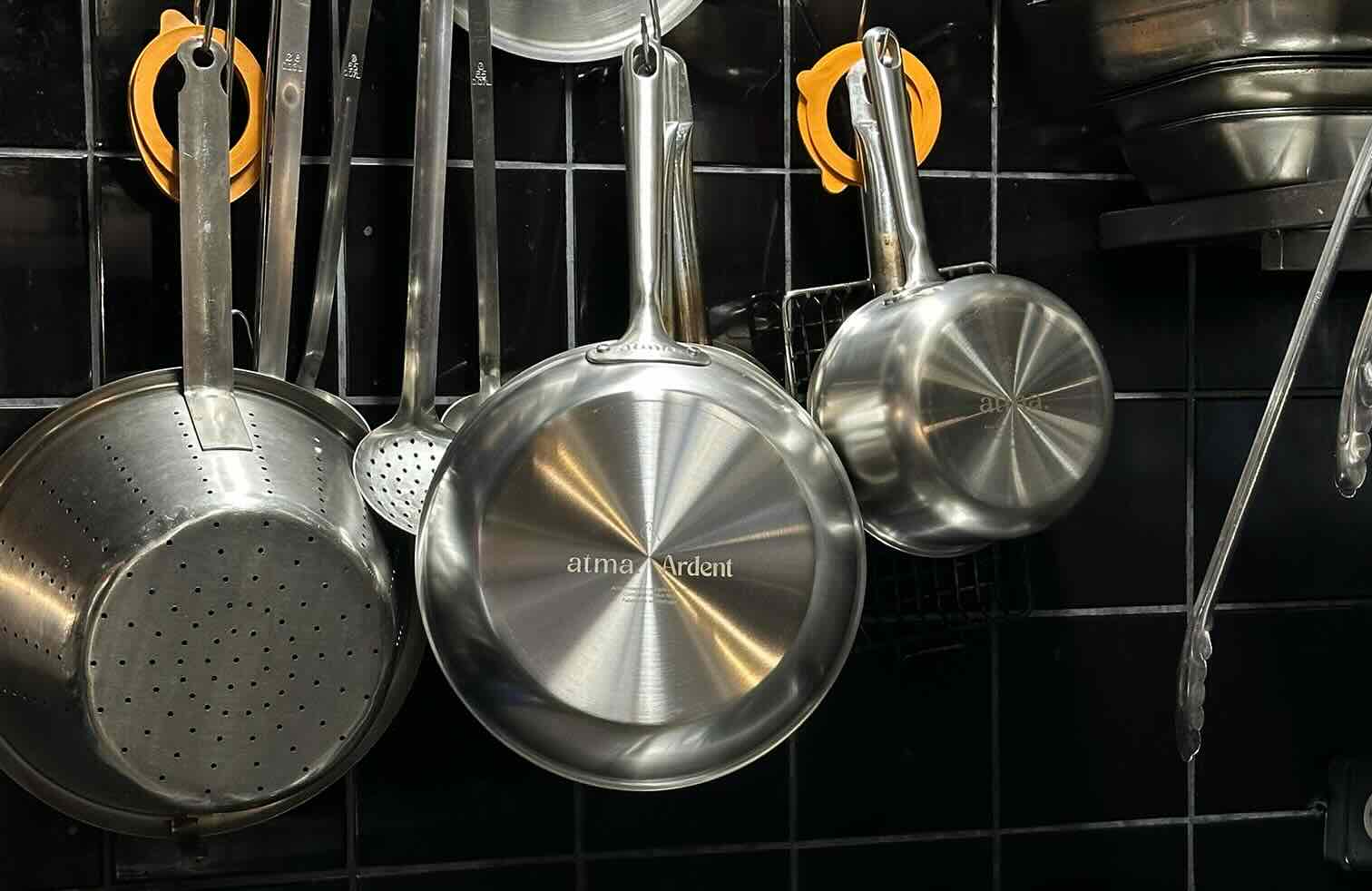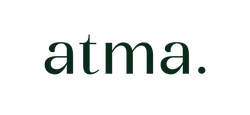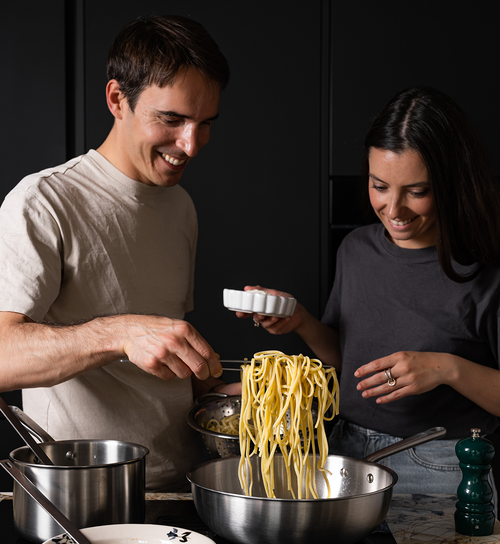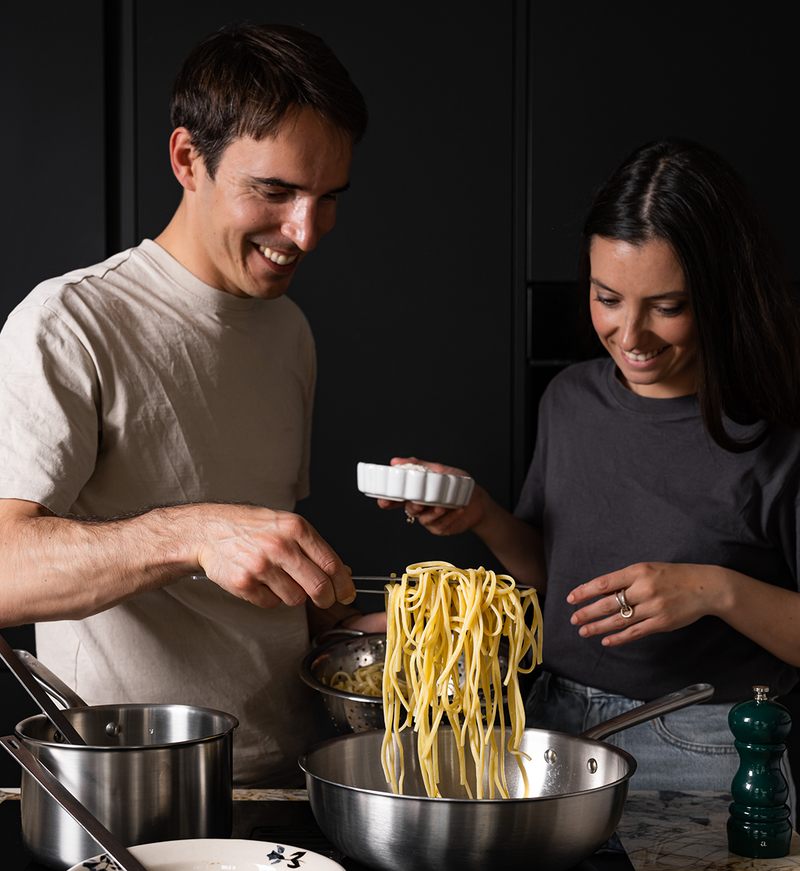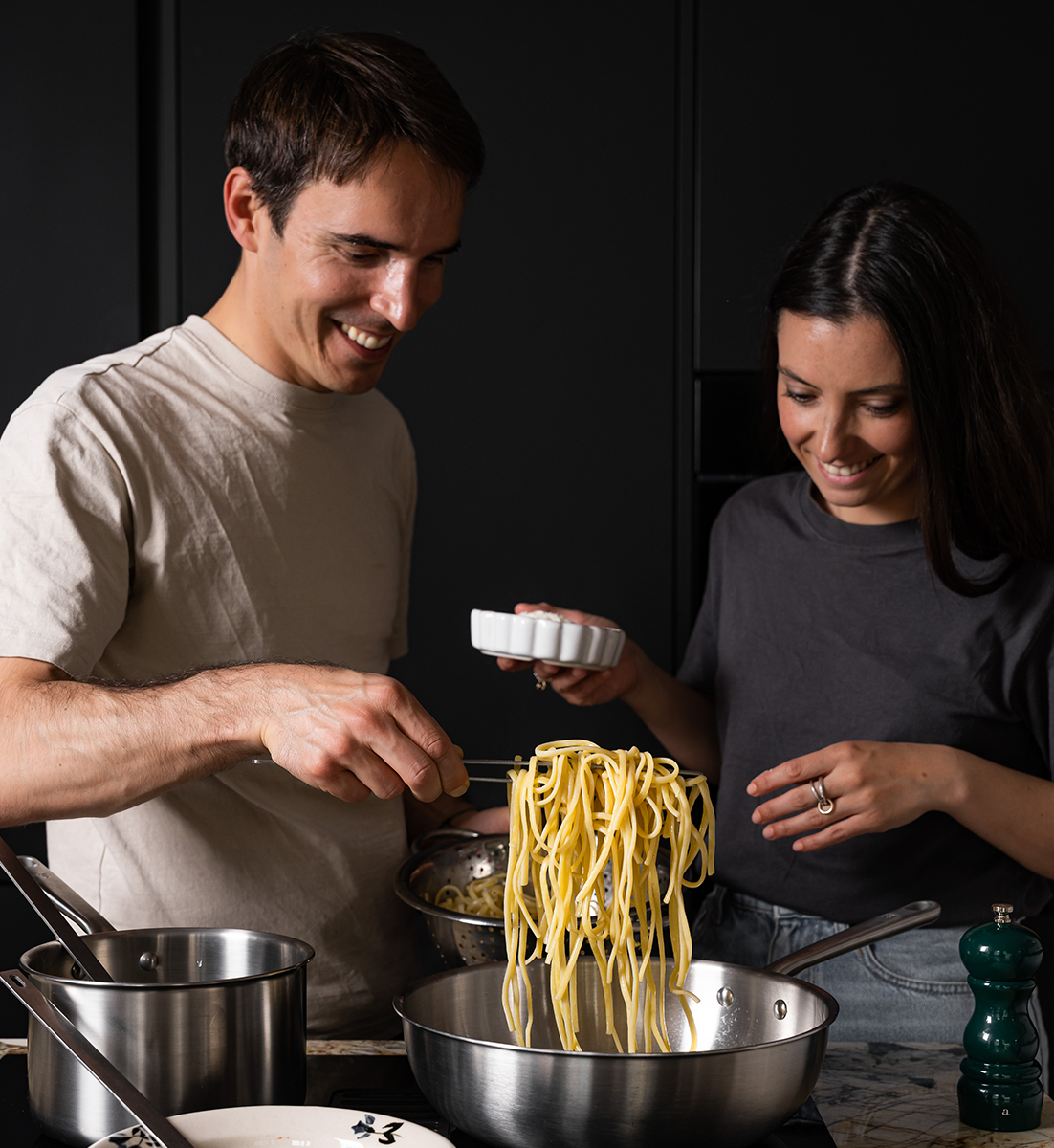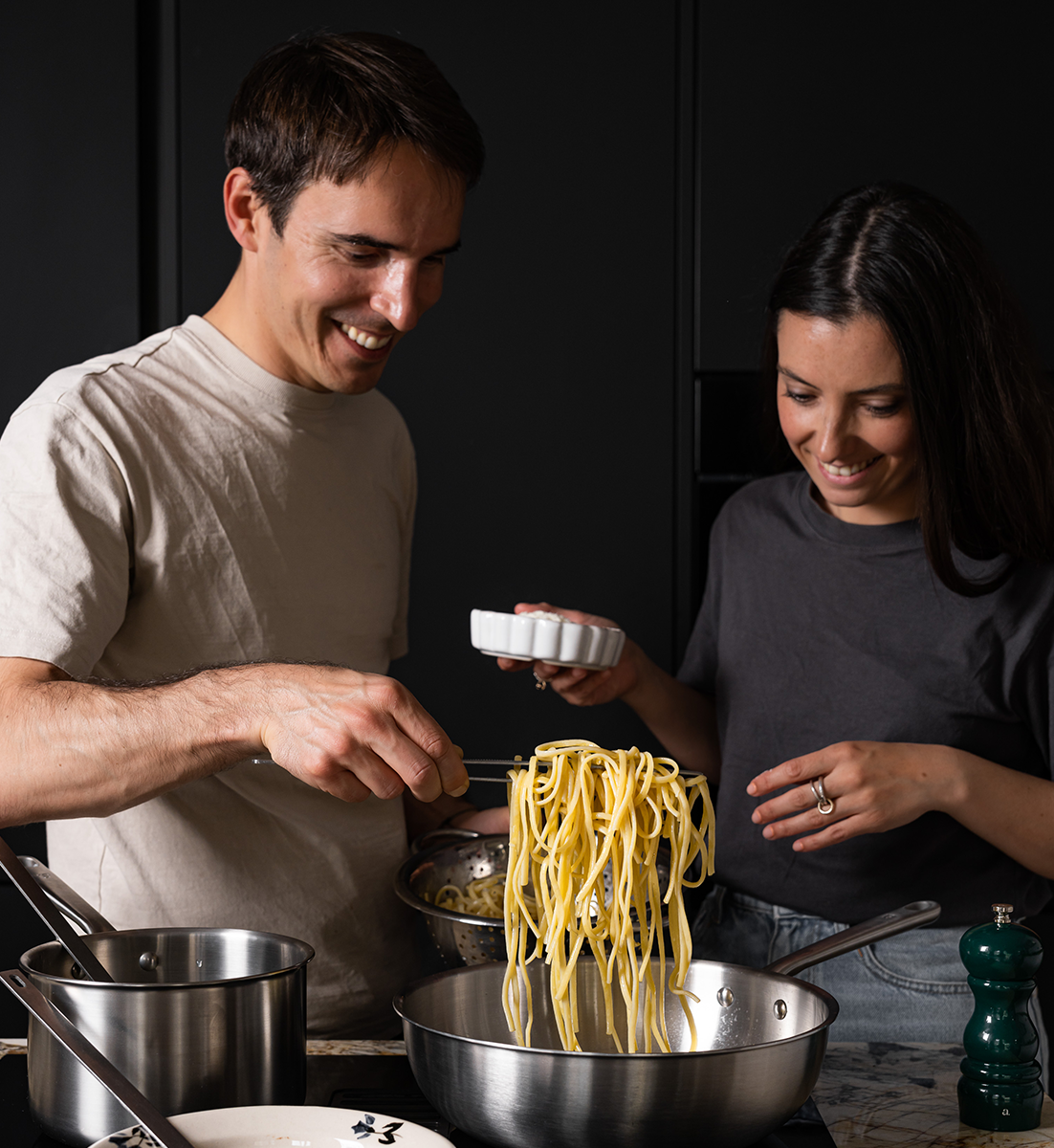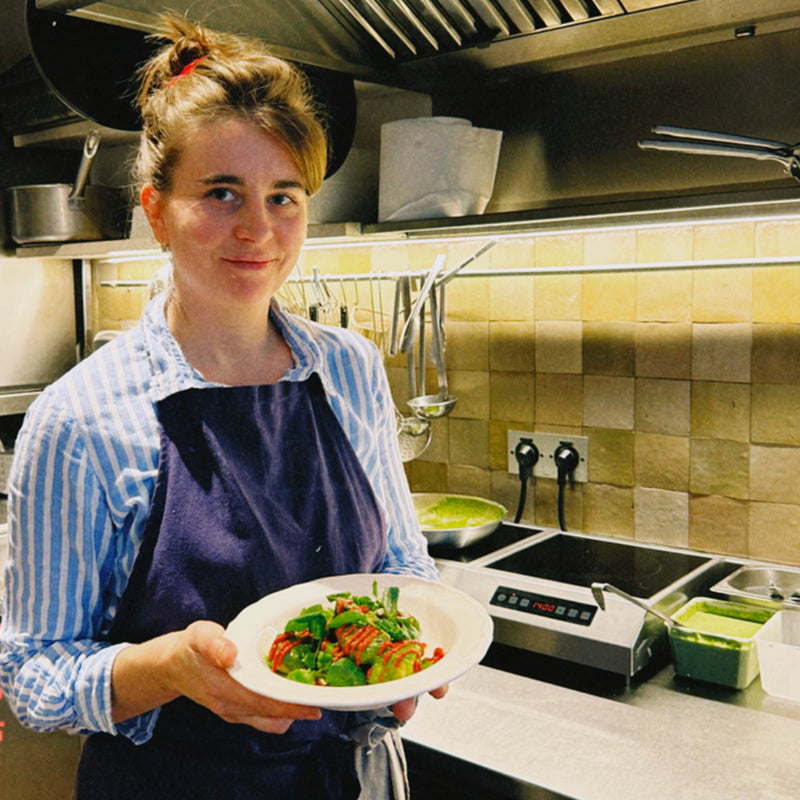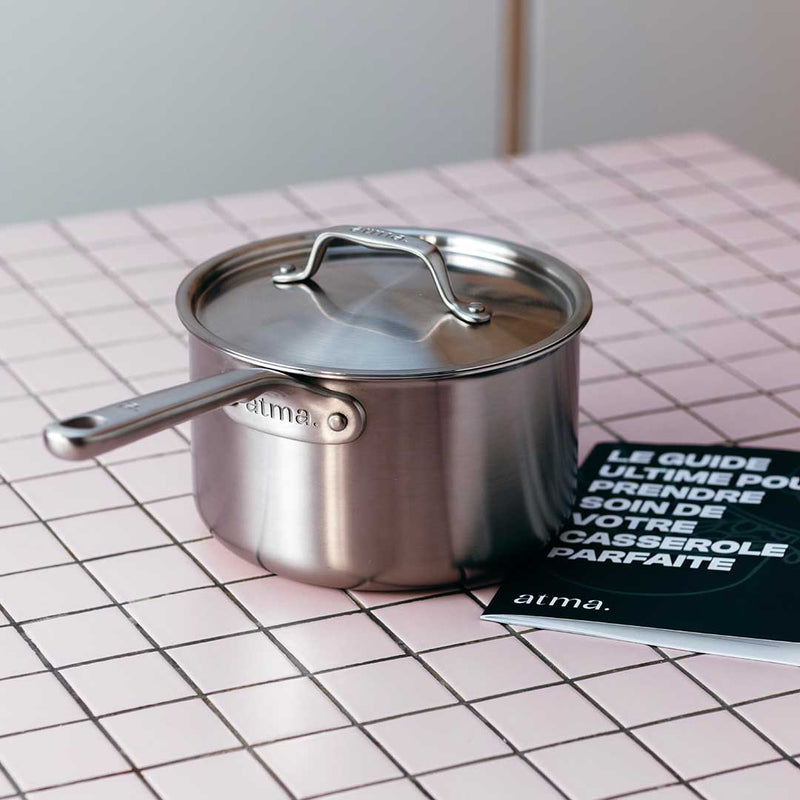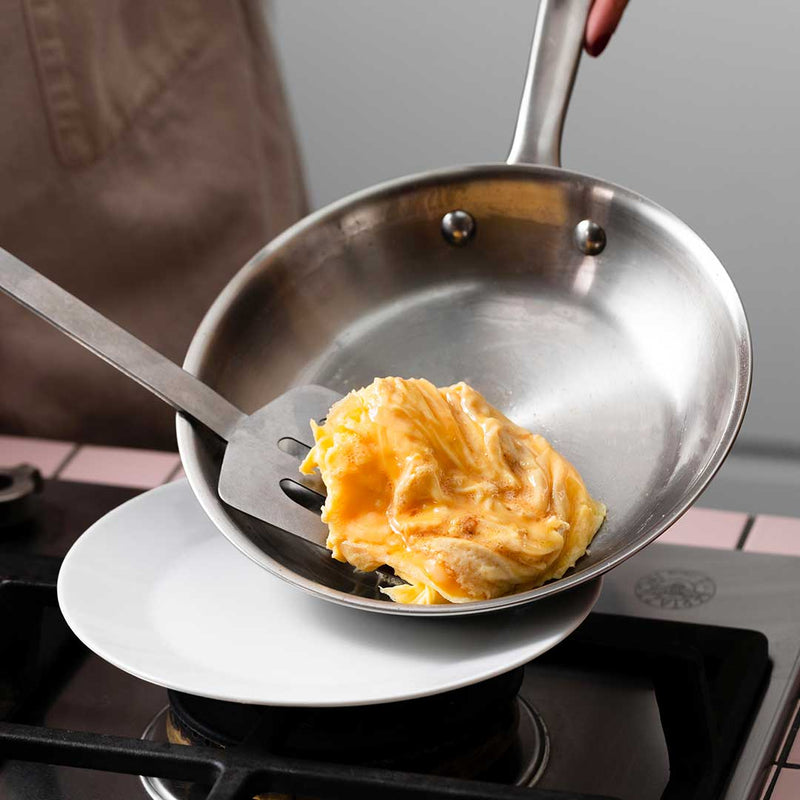Comment bien choisir sa planche à découper ?
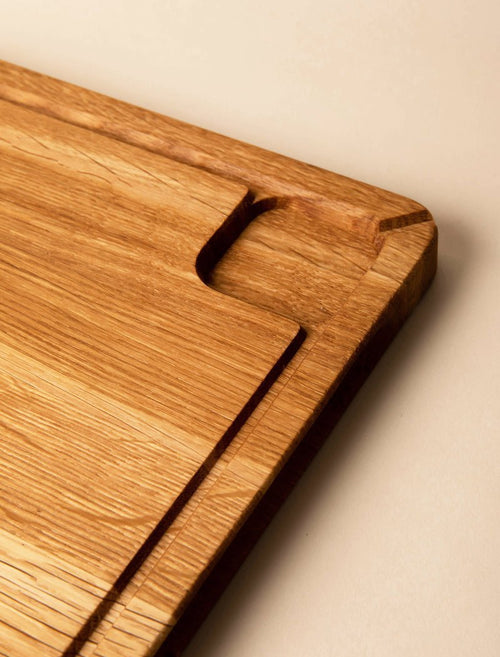
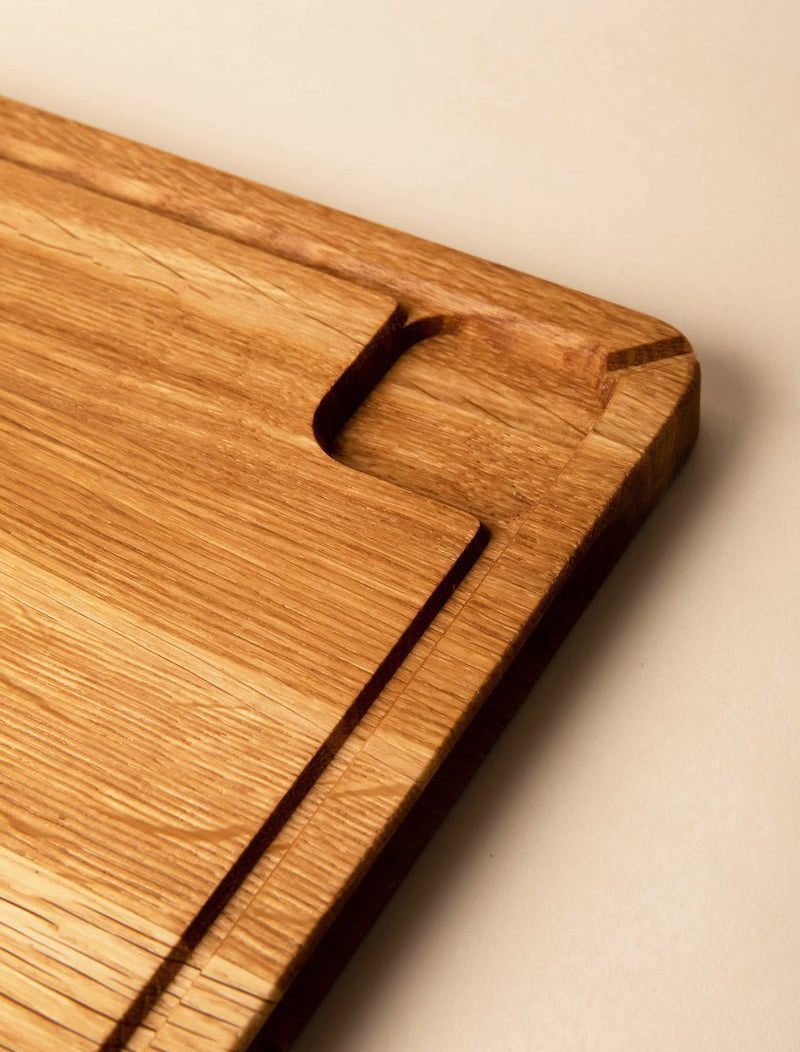
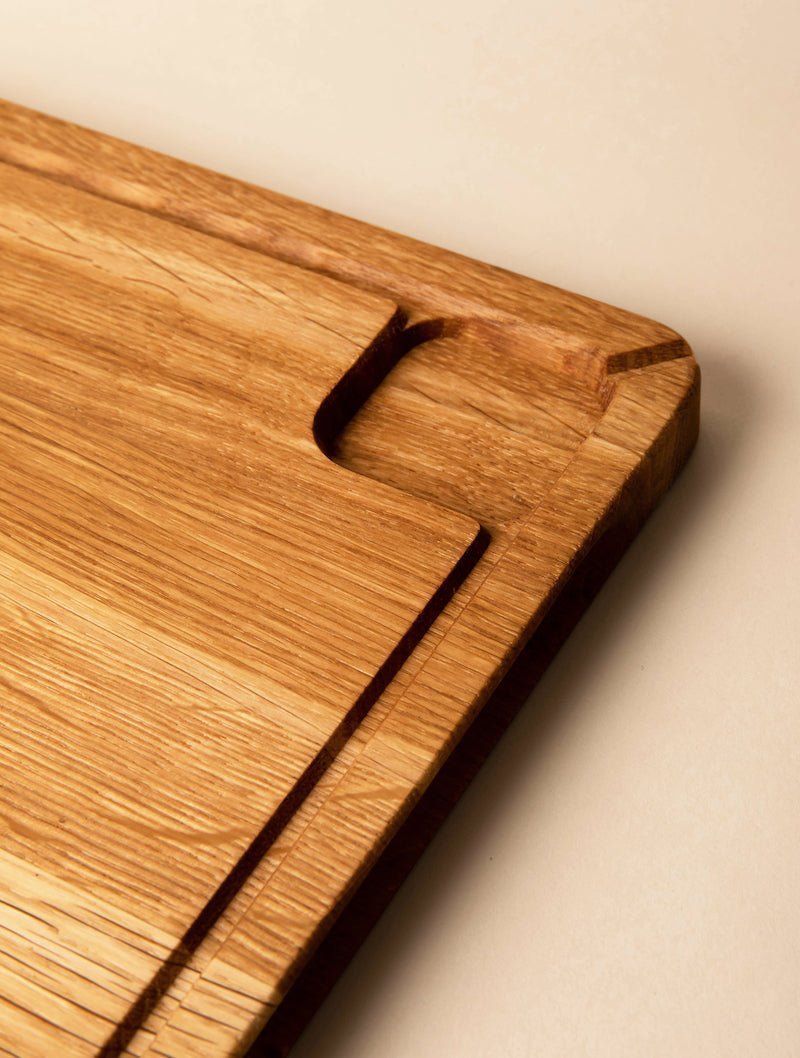
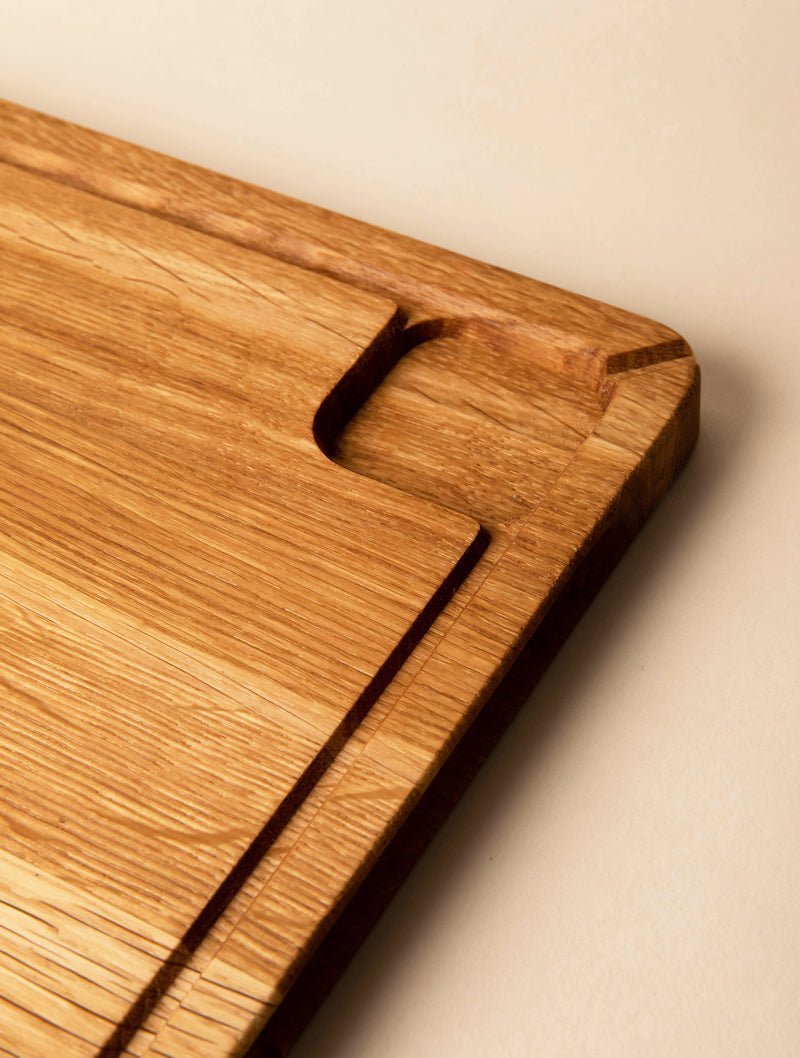




Bois, plastique, verre… quel type de planche à découper est susceptible de vous faire vibrer ? Dur, dur de faire un choix parmi la multitude d’options sur le marché des planches. Loin d’être un choix complètement objectif, l’esthétique étant centrale dans la sélection de son support de découpes, il existe cependant quelques arguments susceptibles de vous aider à faire le choix de votre planche à découper.
Pour vous aider à y voir plus clair, nous reprenons ici les principaux types de planches, en détaillant leurs spécificités.
Planches à découper en bois
Très répandues dans les cuisines, les planches à découper en bois peuvent être d'essences différentes. Hêtre, chêne, bambou, hévéa, acacia… Chaque type de bois aura des caractéristiques qui lui sont propres et qui justifieront de la qualité ou non d’une planche. Pour Atma, nous avons opté pour la solidité du chêne.
Les planches en bois sont recommandées pour ce qui relève de la découpe de la plupart des fruits et légumes, de poissons et autres fruits de mer, sans oublier la viande et la volaille.
Mais quels sont les avantages de la planche de bois ?
- Hygiène : Porteuse d’une mauvaise réputation concernant son hygiène, la planche à découper est pourtant irréprochable. A quoi doit-elle cette qualité ? A la porosité de son bois, qui absorbe les bactéries qui finissent ensuite par disparaître. Certaines études vont même jusqu’à hisser le bois dans le top des matériaux les plus propres.
- Esthétique : Face aux planches en plastique et en verre, il n’y a pas photo : le bois a beaucoup plus de cachet. Et l’esthétique de ses ustensiles de cuisine est très importante : elle vous motivera à passer derrière les fourneaux. Chez Atma, nous avons opté pour le chêne, un bois qui a tendance à se patiner avec le temps, ce qui rend votre planche à découper unique.
- Solidité et robustesse : Sans aucune surprise, le bois est un matériau des plus solides, qui permettra à votre planche de durer dans le temps.
- Rapport qualité/prix : Imbattable sous bien des aspects, la planche à découper en bois présente un rapport qualité/prix équilibré.
Mais puisqu’aucune planche n’est parfaite, la planche à découper en bois présente aussi quelques inconvénients, il faut être honnête :
- Hygiène : Le passage au lave-vaisselle d’une planche à découper en bois est interdit. Ce type de lavage détériore en profondeur le bois de la planche du fait de sa perméabilité.
Attention aussi à bien sécher la planche, si vous ne voulez pas qu’elle s’imbibe d’eau et gondole.
Sensible aux odeurs ? Les planches en bois ne sont peut-être pas faites pour vous car elles pourront prendre l’odeur des aliments (même s’il existe des techniques pour y remédier, nous reviendrons dessus dans un prochain article).
Planche à découper en plastique
Il n’y a pas que le bois dans la vie… il y a le plastique aussi (même si on doit avouer que nous sommes quand même moins fans). Dans cette catégorie, deux types de plastique, avec des qualités différentes, s'opposent. Les planches en polychlorure de vinyle ou PVC, assez basiques, et celles en polyéthylène de haute densité ou PEHD qui sont des planches plus qualitatives.
Ces types de planches présentes certains avantages fort utiles en cuisine :
- Hygiène : Moins hygiénique que le bois, les planches à découper en plastique ont malgré tout le mérite d’être facilement lavables à la main. Elles peuvent également être mises au lave-vaisselle. N’étant pas perméables, elles limitent les risques de contamination croisée.
- Solidité : Les planches à découper en plastique sont d’une rare solidité. Malgré cela, lors de la découpe d’un aliment, la lame de votre couteau de cuisine ne s'abîme pas.
- Prix : les planches à découper en plastique sont disponibles pour tous les budgets. À noter que les planches en PEHD sont plus chères que les planches en PVC, mais de meilleure qualité.
Cependant, il est nécessaire de prendre en compte aussi les faiblesses d’un tel support de découpe :
- Esthétique : loin de la beauté dont dispose une planche à découper en bois, la planche en plastique ne fait pas de son esthétique un atout.
- Solidité : Si ces planches sont plutôt solides, sur la durée les planches en PVC premier prix peuvent s’effriter.
- Hygiène : Les planches premier prix en PVC regorgent de produits toxiques et conservent les odeurs des aliments.
- Prix : Les planches de bonne qualité, en PEHD, sont souvent chères.
Planche à découper en verre
Pour finir, on peut évoquer les planches à découper en verre, plus rares mais qui revêtent, elles aussi, un certain nombre d’avantages.
Côté avantage, le verre se démarque en terme d’Hygiène :
- Hygiène : En plus de passer au lave-vaisselle, les planches à découper en verre sont sans doute les planches les plus hygiéniques. Elles ne conversent pas les odeurs, évitent les contaminations croisées entre aliments et sont faciles à entretenir.
- Esthétique : Les planches en verre sont généralement esthétiques.
Malheureusement, ces avantages sont bien seuls et s’accompagnent de plusieurs inconvénients :
- Solidité : Le verre est un matériau plus fragile que le bois ou que le plastique. Votre planche à découper risque donc de se casser et le risque de blessure existe. De plus, au contact de la planche en verre, le fil de vos couteaux de cuisine est susceptible d’être endommagé. Il est donc déconseillé d’utiliser ce type de planche pour réaliser vos découpes. Servez-vous en plutôt, afin de finaliser votre préparation.
- Bruit : Le bruit de la lame sur le verre peut être désagréable.
Conclusion
Maintenant que vous en savez plus concernant les avantages et les inconvénients qui incombent à chaque type de planche à découper, à vous de faire votre choix. Chez Atma, on a fait le choix d’une planche à découper en bois, pour un rendu unique.
À noter que l’achat de plusieurs planches, dont vous réserverez l’usage à des tâches bien précises, est aussi quelque chose d’envisageable pour toujours s’assurer de découper vos aliments sur le bon support et éviter les contaminations croisées !

Découvez nos best sellers
By Romain De Bona
